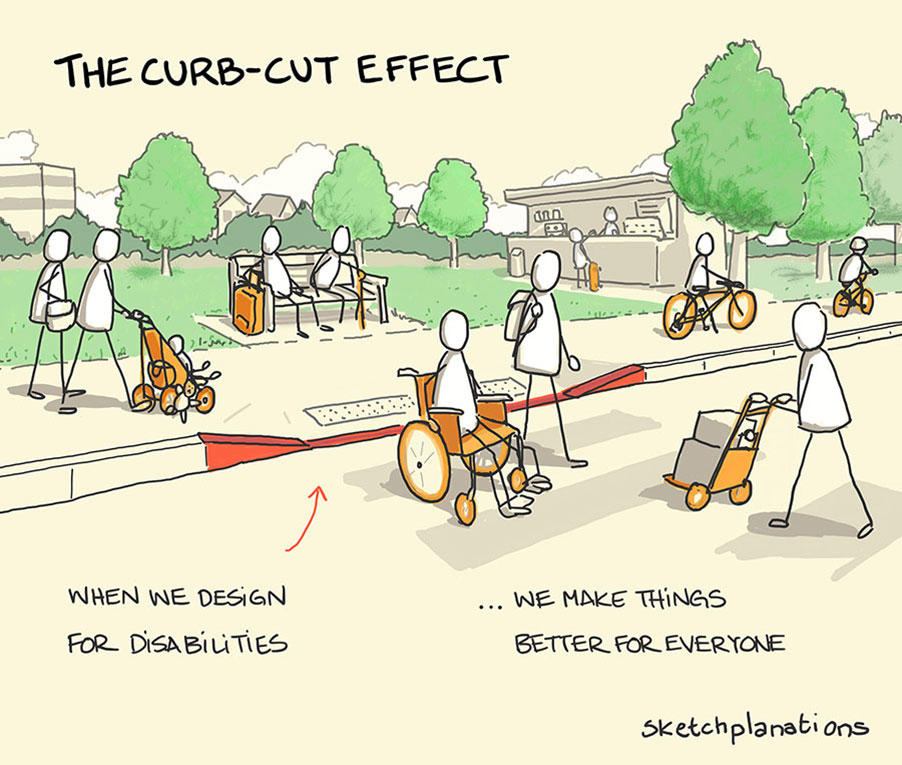The Curb-Cut Effect
, by DCEG Staff
"The Curb-Cut Effect" describes how addressing disadvantages or exclusions experienced by one group of people creates an environment that enables everyone to participate and contribute fully.1
This concept was coined by Angela Glover Blackwell and alludes to how sidewalk ramps (curb-cuts)—installed to make communities more accessible to wheelchair users—became universal because of the improved safety and ease of movement for all people. Curb-cuts benefited not only people in wheelchairs, but also people pushing strollers or carts, wheeling luggage, riding bicycles, and even running/walking.
Accessibility features that promote success for scientists with disabilities are appreciated by and benefit us all. For example:
- Closed captioning or live-captioning for talks and trainings
- Laboratory spaces with ample aisle width to facilitate use of mobility aids and reduce risk of falls
- Flexible-height workstations and adjustable-height standing desks
- Hybrid work and telework
- Text-to-speech and voice-to-text technology
If you would like to provide anonymous feedback or suggestions, please use this one-question survey.
Further resources to learn more:
- Read about the curb-cut effect and the origin of curb-cuts
- Learn why accessibility matters
- Making science labs accessible for trainees with disabilities
References
- Blackwell AG. The Curb-Cut Effect. Stanford Social Innovation Review, 2016. doi:10.48558/YVMS-CC96.
